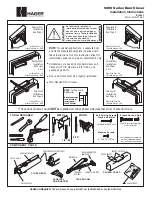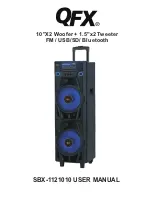
8 TROUBLESHOOTING
0463 766 001
-
71
-
© ESAB AB 2021
NOTE!
To maintain the MIG gun is in good working order do the following:
•
Ensure that the gas holes are not blocked and gas is exiting out of the MIG gun
nozzle.
•
Do not restrict gas flow by allowing spatter to build up inside the MIG gun nozzle.
•
Check that the MIG gun O-rings are not damaged.
WARNING!
Disengage the feed roll when testing for gas flow by ear.
Inconsistent wire feed
Wire feeding problems can be reduced by checking the following points.
Table 24: Wire feeding problems
Type of fault
Corrective action
Feed roller driven by motor in the cabinet
slipped.
Wire spool brake is too tight.
Wire spool unwound and tangled.
Wire spool brake is too loose.
Worn or incorrect feed roller size.
Use a feed roller matched to the size you
are welding.
Replace feed roller if worn.
Wire is rubbed against the misaligned
guides and reduced wire feed ability.
Misalignment of inlet/outlet guides
The liner is blocked with swarf
Increased amounts of swarf are produced
by the wire passing through the feed roller
when excessive pressure is applied to the
pressure roller adjuster.
Swarf can also be produced by the wire
passing through an incorrect feed roller
groove shape or size.
Swarf is fed into the conduit liner where it
accumulates thus reducing wire feed ability.
Incorrect or worn contact tip
The velocity contact tip transfers the weld
current to the electrode wire. If the hole in
the contact tip is too large then arcing may
occur inside the contact tip resulting in the
wire jamming in the contact tip.
When using soft wire such as aluminum it
may become jammed in the contact tip due
to expansion of the wire when heated. A
velocity contact tip designed for soft wires
should be used.
Poor work lead contact to workpiece
If the work lead has a poor electrical contact
to the work piece then the connection point
will heat up and result in a reduction of
power at the arc.
Bent liner
This will cause friction between the wire and
the liner thus reducing wire feed ability












































